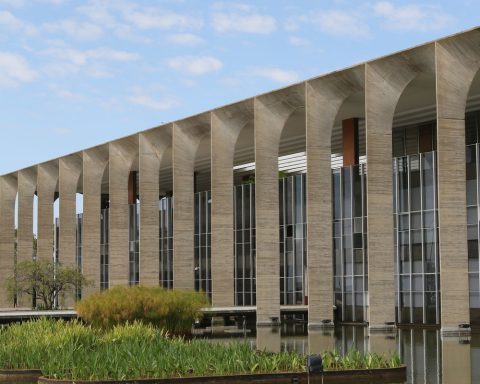After the package of five bills that left the Former Minister of Education, Aurora Vergaraleft ready to present to Congress for reform the education systemThe National Government has already confirmed that it will only present one, and in a reduced version.
It’s about the Restructuring of Articles 86 and 87 of Law 30 of 1992which establish the Colombian State funding of public higher education institutions (HEIs) in the country.
(Further: Why did they demand the election of Leopoldo Múnera as rector of the National University again?).
This, however, is not a minor reform. In fact, recently, Francisco Vargas Bonilla, administrative vice-rector of the University of Antioquiatold EL TIEMPO that these articles bear enormous responsibility for the financial crisis that this and other public universities are currently experiencing.
Public higher education
Cesar Melgarejo / Portfolio
“This is the sum of several things. First, articles 86 and 87 of Law 30 (which establish the annual increases that the Government makes to public universities) need to be updated. These resources have historically presented a gap between the growth of the costs of public universities versus the updating of that budgetary base; the cost of what is called the educational basket in the country has been well above the value of the CPI established by law.“, Vargas said.
Other rectors of this type of institution have also agreed on this, such as the case of Leopoldo Múnera Ruiz, acting rector of the National University of Colombianothing more and nothing less than the most important public HEI in the country.
(Can read: ‘We must evaluate teachers in order to improve’: Uniminuto rector).
“Articles 86 and 87 of Law 30, which deals with the financing of public universities, need to be reformed. Public universities cannot continue with this instability in financing that depends on the will of each president. This financing must be given a progression that allows universities and technical and technological institutions to breathe.“, he said, in conversation with EL TIEMPO.
A deficit that never stops growing
According to analyst Ricardo Rodríguez, consulted by EL TIEMPO, articles 86 and 87 of Law 30 are already obsolete: “The reality of public universities has changed a lot in 30 years. At the time, it was believed that taxing the annual increases in the value of the CPI would keep their finances stable, but the truth is that, on the contrary, a financial gap has been created that grows larger year after year, it accumulates, and that the same institutions have to look at how to fill it.“.

National university of Colombia
Linda Patino
And to understand the seriousness of this problem, we must know firsthand how public universities are financed at the national level. According to this law, The budget that the State allocates to public institutions corresponds to the value of inflation.
“This has been a problem, because college costs have risen on average 5.2 percentage points more than the CPI.“, he explained to the same newspaper Jairo Torres, rector of the University of Córdoba and president of the State University System (SUE)an organization that brings together the country’s 34 public universities.
(Can read: Wear and tear of reforms would limit the fulfillment of the PND in education and health).
This can be explained, among other things, due to an increase in the number of enrolments year after year, that is, universities receive more students year after yearThis requires institutions to have more staff, a larger teaching staff and a series of other expenses.
This has caused that, from covering almost all university costs at the time Law 30 came into force, Now the resources provided by the Nation, mayors and governors are equivalent to 55.25%while the remaining 44.75% must be paid by the educational institutions themselves.

University of Antioquia.
Courtesy of the U. de A. Communications Department
In fact, the difference between the increases assessed by inflation and the real costs borne by universities is recorded in the Higher Education Cost Index (ICES) prepared by the National Administrative Department of Statistics (DANE).
According to this index, the costs of the country’s state universities in the second half of last year showed an annual increase of 14.45%. In contrast, The inflation rate for that year was 9.28%. Said value This is what the Nation had to increase by law for the current year to the budget allocated to public universities, 5.17 percentage points below what their costs actually increased..
It is worth mentioning that this situation has been occurring for several years. In fact, according to the SUE, from 2011 to 2021 alone, inflation was, on average, 3.7%, meaning that this figure was the increase in resources that universities received each year in that time range. However, Its operating expenses rose annually by 8.8% and for personnel by 9.4%, that is, about five percentage points (pp) more than what it received..
(Besides: Five out of 10 Colombians do not like their financial situation).
It is also worth mentioning that since 2022 the Government has been increasing tuition fees to universities annually above the inflation rate, partly due to the student strike in 2018. Thus, for 2024 the increase was above the inflation rate, with an additional 9%. However, It should be noted that this increase was higher than that established by law, so it is not guaranteed in the General Budget of the Nation and is subject to the will of the Government in power..

Education
iStock
“In recent years, this increase above the CPI has managed to slow the deficit from increasing, but it has not stopped it from existing or eliminated the risk of it continuing to increase. Basically, public universities depend on the Government wanting to give more money, but Law 30, as it stands, does not guarantee these resources.”, explains Rodriguez.
A light?
To solve these problems, the sectors seem to agree that inflation data should no longer be used to calculate annual budget increases for universities, but rather it is the Dane Ices that really determines how much the expenses for public institutions should be increased in real terms on an annual basis..
However, making this calculation would be more complex than just taking the percentage of said index and, for this, several proposals have already been presented, both by the SUE and by the the same Government and independent sectors, such as the representative to the House for the Green Alliance and former student leader, Jennifer Pedraza.
(We recommend: General Budget of the Nation for 2025: details of the project).
It is not enough to analyze the difference between inflation and the Ices, but also the budget availability, the distribution of these resources and, in addition, operating costs. Some sectors suggest that a percentage should be taken into account for investment, considering the goals that the current National Government has for the educational sector in terms of coverage.
Other sectors, such as the student movement, urge that this should be settled “historical debt“, which would correspond to the value of the costs that the Colombian State did not cover in the last three decades, that is, the difference between inflation and the Ices of each year.
BRIEFCASE
*With information from EL TIEMPO – EDUCATION
















